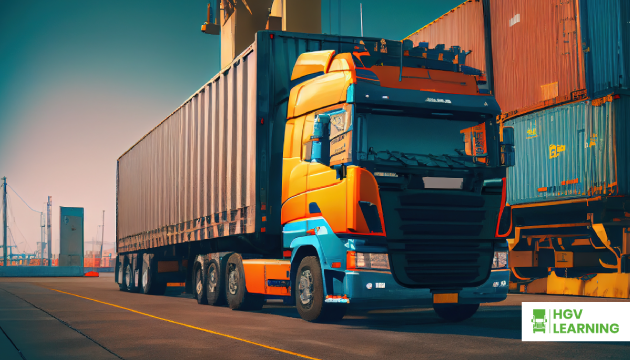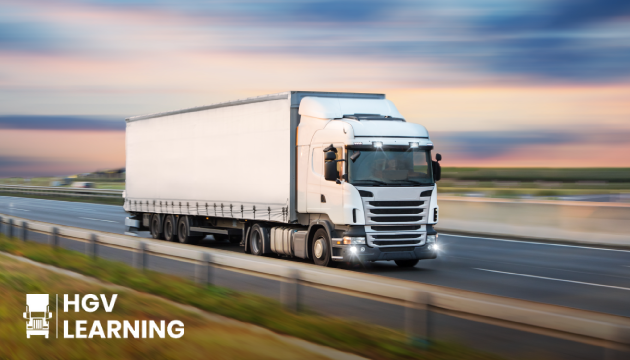Related Articles

28/10/2025
Preventing HGV Overloading: Legal Limits and On-the-Road Consequences

21/10/2025

Starting your career as a heavy goods vehicle (HGV) driver is an exciting step into a vital and rewarding industry. But alongside the freedom and responsibility of the open road comes the need for consistent awareness, skill, and professionalism. As a new driver, adopting strong safety habits from day one is essential to ensure not only your well-being but also the safety of other road users and the efficiency of your deliveries. In this guide, we share our top HGV safety tips to help you build safe driving habits and succeed in your new role.
Before setting off on any journey, always perform a full walk-around check of your vehicle. This should include brakes, tyres, lights, mirrors, fluid levels, load security, and warning systems. The Driver and Vehicle Standards Agency (DVSA) requires HGV drivers to complete these daily checks, and failure to do so can result in fines or even prosecution.
Use a checklist to ensure nothing is missed, and report any defects immediately. Proper vehicle maintenance not only prevents breakdowns but also helps keep you and other road users safe. Taking a few extra minutes before each shift can prevent costly or dangerous situations later on.
One of the most overlooked HGV safety tips is effective route planning. Mapping your route before departure helps you avoid narrow roads, low bridges, and restricted zones that may not be suitable for large vehicles. This is especially important for new drivers who may not be familiar with route-specific risks.
Use a reliable HGV-specific sat nav system and cross-reference it with maps or route planning software. Be aware of roadworks, weather conditions, and traffic updates, and have an alternate route prepared in case of disruption.
Improperly loaded or unsecured cargo can shift during transit, affecting the stability and handling of the vehicle. This can lead to accidents, especially when turning or braking. Make sure loads are evenly distributed and secured using appropriate straps, bars, and nets.
Check the weight distribution and ensure you’re not exceeding legal load limits. Be aware of the type of cargo you’re transporting, as hazardous or sensitive goods may have specific loading and safety requirements. If you’re unsure, speak with your supervisor or refer to the load documentation before departure.
HGVs take longer to stop than smaller vehicles, which means maintaining a safe following distance is critical. Leave plenty of space between you and the vehicle ahead to allow for reaction time, especially in poor weather or on wet roads.
Speed limits for HGVs are different from cars, particularly on single and dual carriageways. Make sure you’re aware of the legal speed limits for your vehicle type and load class. Staying within the limit not only keeps you compliant with the law but also reduces the risk of accidents and fuel consumption.
Due to the size of HGVs, blind spots can be extensive. Use your mirrors regularly and make sure they’re clean and correctly adjusted before every journey. Always check your mirrors before changing lanes or turning, and use your indicators well in advance to signal your intentions.
Modern vehicles may be equipped with additional cameras or sensors, but these should complement rather than replace mirror checks. Awareness of your vehicle’s blind spots is one of the most important HGV safety tips for new drivers.
Fatigue and distraction are leading causes of road accidents. HGV driving requires constant focus, particularly on long-distance routes. Plan regular breaks, stay hydrated, and avoid using mobile phones or other devices while driving.
If you feel tired, stop at a safe location and rest. Avoid high-sugar snacks and heavy meals, which can lead to energy crashes or drowsiness. Some drivers find that listening to talk radio or audiobooks can help maintain focus, but always make sure these are not distracting.
Every HGV is different. From braking distances and turning circles to gearbox configurations and onboard technology, it’s important to become familiar with the specific vehicle you are driving. Take time to understand how it handles under different conditions, especially when fully loaded.
If you are assigned a new vehicle, don’t be afraid to ask for a walkaround or briefing from your manager or a more experienced colleague. Understanding your vehicle’s limitations and features is one of the most overlooked but important safety practices.
Fatigue is one of the biggest threats to road safety. Drivers’ hours regulations exist to prevent accidents caused by tiredness and ensure drivers get the rest they need. As a new HGV driver, you must learn and follow these rules strictly.
Use your tachograph correctly, take your required breaks, and do not allow pressure to make you skip rest periods. Planning your shift around rest times will help keep you legal, safe, and alert. For more support, review our article on understanding drivers hours rules.
Rain, fog, snow, and ice significantly increase stopping distances and reduce visibility. Always adjust your driving to suit the weather conditions. This may mean reducing your speed, increasing your following distance, or pulling over in severe conditions.
Use lights correctly, avoid sudden braking or acceleration, and be mindful of wind gusts that can affect high-sided vehicles. Keeping your windows and lights clean is especially important during the winter months.
Your size and visibility mean that other drivers may misjudge your movements. Use your indicators, horn (when necessary), and hazard lights to communicate clearly. Make eye contact with pedestrians or cyclists where possible, and always check for vulnerable road users before turning.
In urban settings, be particularly cautious around cyclists, motorbikes, and pedestrians. Take extra care when reversing, and use a banksman if required.
Safety is built into every part of our training process. From your first lesson to your final assessment, we make sure you develop the confidence and habits that will keep you and others safe on the road. Our DVSA-approved training providers ensure you’re taught the practical and theoretical foundations of professional driving.
We cover everything from vehicle checks and tachograph use to route planning and compliance. With guidance tailored to new drivers, our goal is to help you feel confident, capable, and prepared from day one.
To take the first step, check out our article on finding HGV training near you and let’s get you on the road safely.
Building strong safety habits early in your career will set you up for long-term success as an HGV driver. From daily checks and responsible speed management to awareness of blind spots and proper rest, these safety practices will not only keep you compliant with regulations but also protect you and those around you.
By following these HGV safety tips and training with a trusted provider like HGV Learning, you’ll be well prepared to face the challenges of the job and drive with confidence.

28/10/2025

21/10/2025
Complete the form below and we’ll contact you asap.

